Development of a genetic map for cisco and bloater
Contributing Authors
Wendylee Stott (DFO, wendylee.stott@dfo-mpo.gc.ca)
Executive Summary
We constructed a linkage map for cisco (Coregonus artedi), an economically and culturally important fish in the Great Lakes and across North America, which previously lacked a high-density haploid linkage map. We used diploid and haploid cisco from northern Lake Huron to create the first male and female linkage maps for cisco and with 20,292 loci they are the densest salmonid linkage maps created to date. We compared our new maps to linkage maps for other salmonids including Atlantic salmon (Salmo salar), lake whitefish (C. clupeaformis), European whitefish (C. lavaretus), brook trout (Salvelinus fontinalis), and Chinook salmon (Onchorhynchus tshawytscha) to analyze patterns of tetrasomy and chromosomal fusion/fission across salmonids. Comparative genomic analyses revealed that patterns of residual tetrasomy are generally conserved across species, although interspecific variation persists. Interspecific variation in extent of rediploidization may have important implications for understanding salmonid evolutionary histories and informing future conservation efforts. The linkage map is being used in ongoing projects documenting geographic and adaptive diversity in Great Lakes coregonines and in projects to develop additional genomic resources for coregonines.
Comparative Genomic Analyses and a Novel Linkage Map for Cisco (Coregonus artedi) Provide Insights into Chromosomal Evolution and Rediploidization Across Salmonids | G3 Genes
The First Haploid Linkage Map in a Coregonid (Coregonus artedi) Improves Knowledge of Chromosomal Evolution and Rediploidization across Salmonids | UWSP Cisco (Coregonus artedi) Linkage Map | NIH
